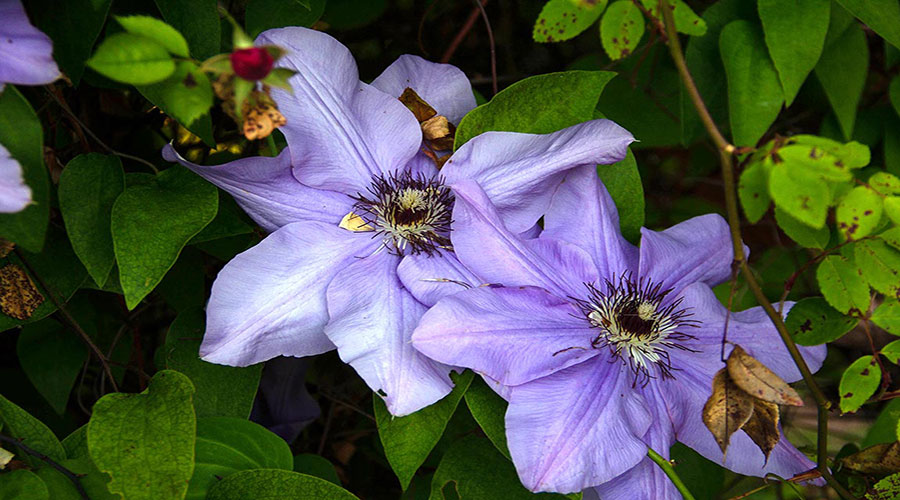
Clematis blooms are spectacular. They have become one of my favorites in the flower garden. With several varieties and colors, they add cheerful color wherever you find something for the vines to grow on. Mine might be growing on a metal trellis with a climbing rose, or just growing in among the branches of a climbing rose. I have one growing on a dead tree trunk. On the left is a clematis on an arch with a climbing rose on the back door of our house. The picture on the right is a 40-year old clematis at the family beach house in Waldport Oregon. It has been pruned back nearly to the ground and can grow up to the second-level balcony in 1-2 years.
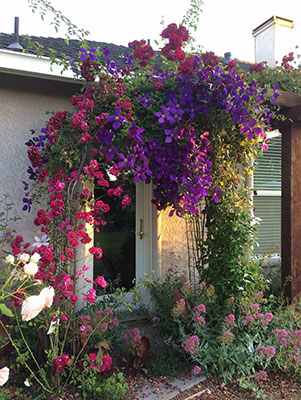
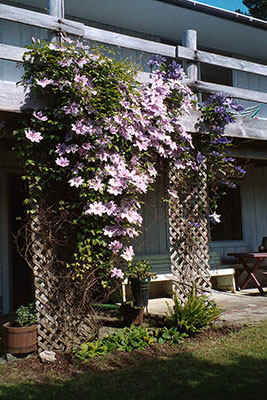
Where can I plant clematis? First consider a location where they will get plenty of sun. While sun is important, their roots need to be shaded and cool. You can accomplish this by planting groundcover nearby or a couple inches of mulch. Here is a picture of something I’ve done, repurposing a broken pot to shade the roots. Well-draining soil is important too. Besides that, care of the clematis is fairly simple.
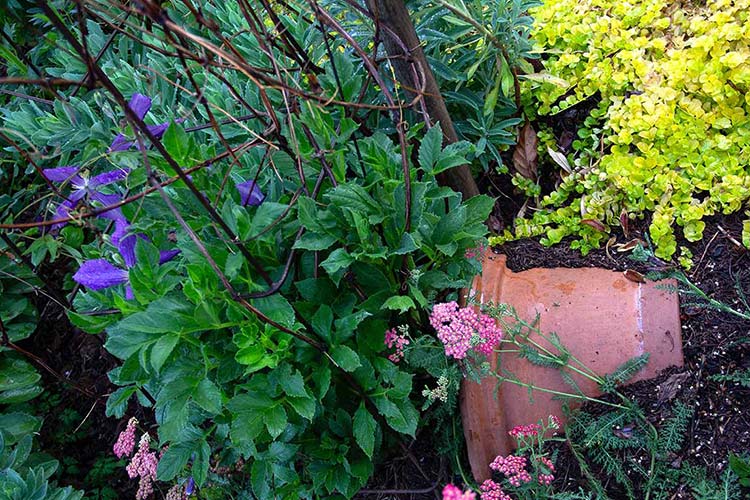
Clematis need a structure or other plant or a fence for the vines to spread. Letting them climb another plant such as a rose has some risks as I’ll explain below. But here is a shot of clematis growing on a metal arbor with roses, across the path from centranthus rubra.
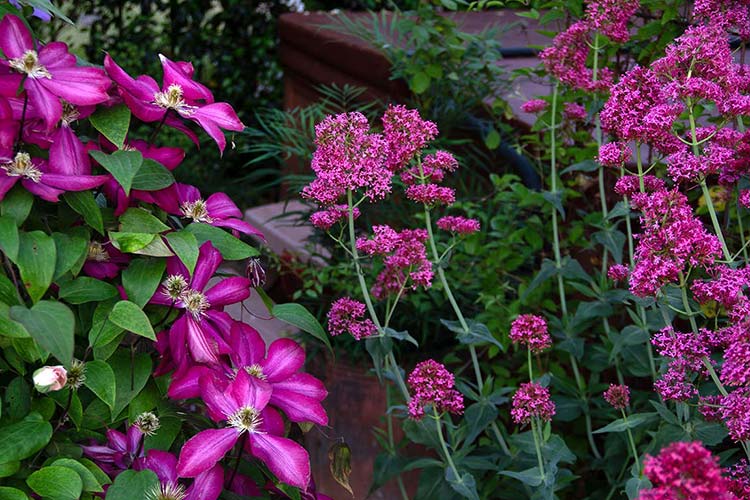
Clematis in our area bloom mainly in the spring. Some will also rebloom in the Fall although not as spectacular. After blooming, some clematis plants leave an attractive whorled seed pod, such as this clematis ‘Nelly Moser’
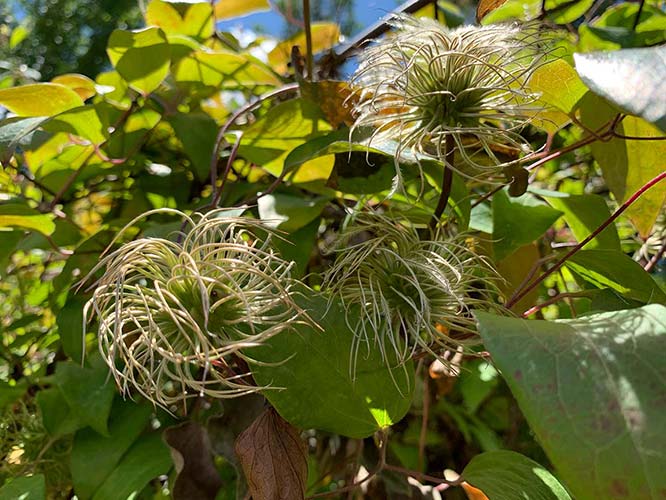
Danger: Be sure to tell your spouse and gardener about clematis and where they are planted. In early spring, the vines are generally woody, spindly, and often look dead and sometimes in a tangle of vines. So an overzealous and undereducated pruner will take them out. However, in the winter in my area, I will start by cutting back the entire mass of vines by a couple feet, and then check the cut stems. If they are dead, cut further down. Soon you will get to the point where the stems are green on the inside and therefore alive. I just cut out the side branching which may also still some of the seed heads left on. Or continue cutting down – even to 1 to 2 feet tall and your clematis will begin growing when the temperatures are right. It may bloom a little later when given this more severe pruning but all the new stems will reenergize the plant.
If you are more of a purist about pruning your clematis, you can learn about the three categories of clematis and specific ways and times for pruning, and everything else you could ever want know about clematis by reading “Companions to Clematis” by Marigold Badcock. I learned about this book when I attended a lecture by the author at the Northwest Flower and Garden Show in Seattle, Washington one cold, snowy week in February.
Here are some more pictures taken from my garden in May.
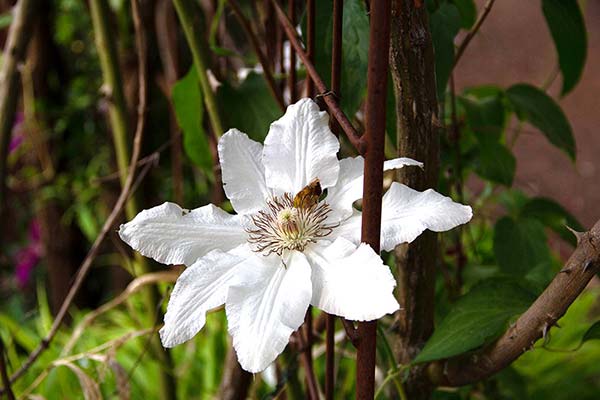
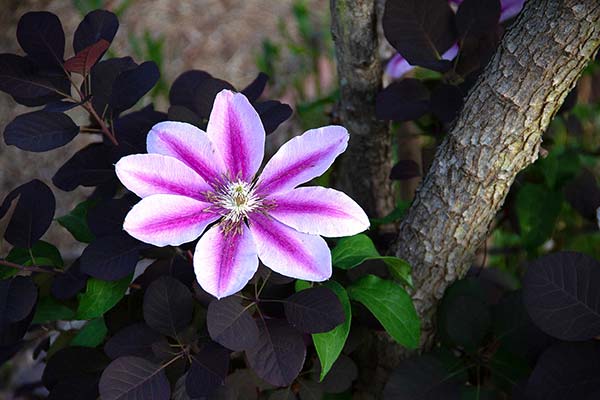
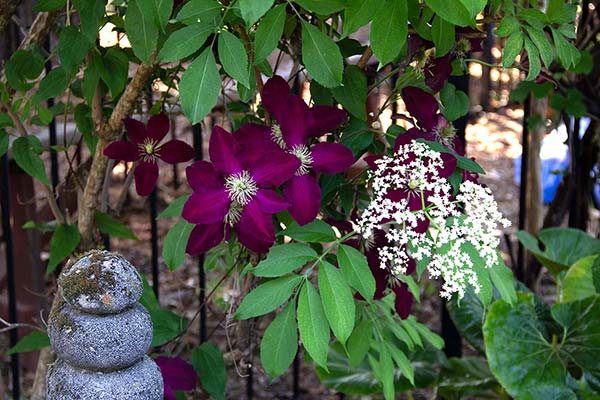


Leave A Comment